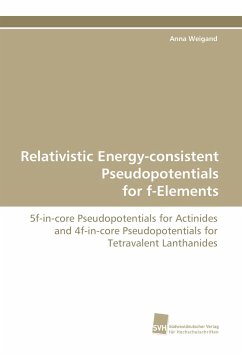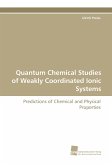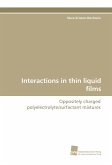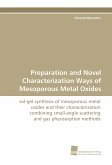The reduction of the radiotoxicity of nuclear waste by the separation of its components is one of the main topics in f-element chemistry. However, the separation of actinides and lanthanides contained within this waste is extremely difficult. Consequently an understanding of their properties is desirable, but these studies involve several problems for both experimental and theoretical work. While the toxicity and radioactivity are the main obstacles for experimentalists, theoreticians face challenges in the significant contributions of relativity and electron correlation as well as in the complexities arising from partially occupied f shells. The author Anna Weigand provides relativistic energy-consistent f-in-core pseudopotentials for actinides and lanthanides, which cope with some of these problems. The pseudopotential approach restricts the explicit calculations to the chemically relevant valence electron system and implicitly includes relativistic effects. Even problems due to the open f shells are avoided by their inclusion into the pseudopotential core. Test calculations on f-element fluorides and large complexes as actinocenes show satisfactory results.







